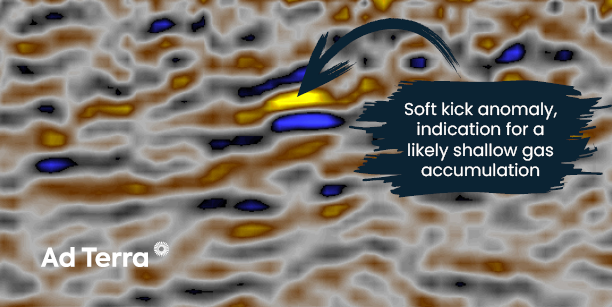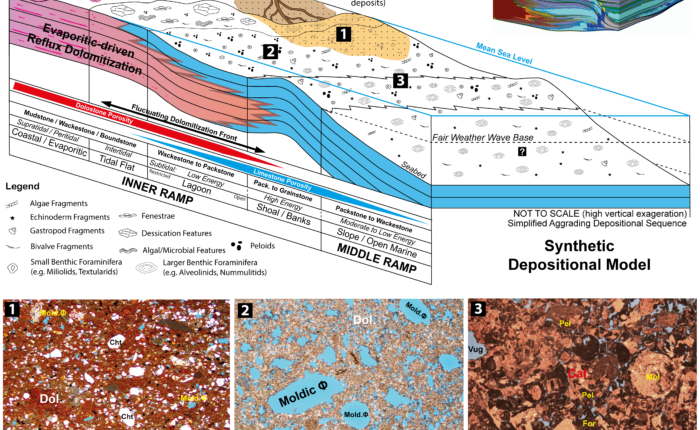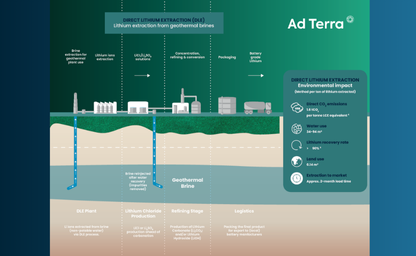
Methane accumulations are common in the shallow subsurface and can be found when drilling boreholes throughout the Molasse Basin, extending from Geneva to Zurich. Such accumulations pose significant risks during geothermal drilling, potentially leading to atmospheric release or necessitating flaring, resulting in CO2 emissions.
Assessing shallow gas risks is imperative before initiating drilling operations to address these challenges.
The prevalent industry method for identifying these potential pockets focuses on screening seismic data for specific indicators—bright and flat spots indicative of shallow gas pockets (see illustration). The presence of natural gas significantly alters the density and, consequently, the acoustic impedance of sedimentary layers, facilitating the detection of gas pockets through seismic reflection data. A thin gas layer typically manifests as a bright, flat spot on a seismic image. Implementing this screening process around planned well locations is critical.
Following the industry standards, if the operator does not have a modern high-resolution survey covering the drilling location, Ad Terra recommends conducting a high-resolution 2D seismic reflection survey to minimise drilling risks and avert potential gas blowouts upon selecting a drilling location. This survey targets the uppermost 500 meters below the surface, employing a low ground force approach and leveraging a broad frequency spectrum, ranging from up to 250 Hz for high resolution to 500 Hz for ultra-high-resolution assessments.
This strategic approach underscores the intersection of advanced seismic technology and rigorous scientific methodology, ensuring safer and more environmentally conscious geothermal energy extraction within the Molasse Basin.
When assessed properly shallow hazards represent a limited risk.
Do not hesitate to contact Ad Terra Consultancy if you need support conducting such operations and analysis.


